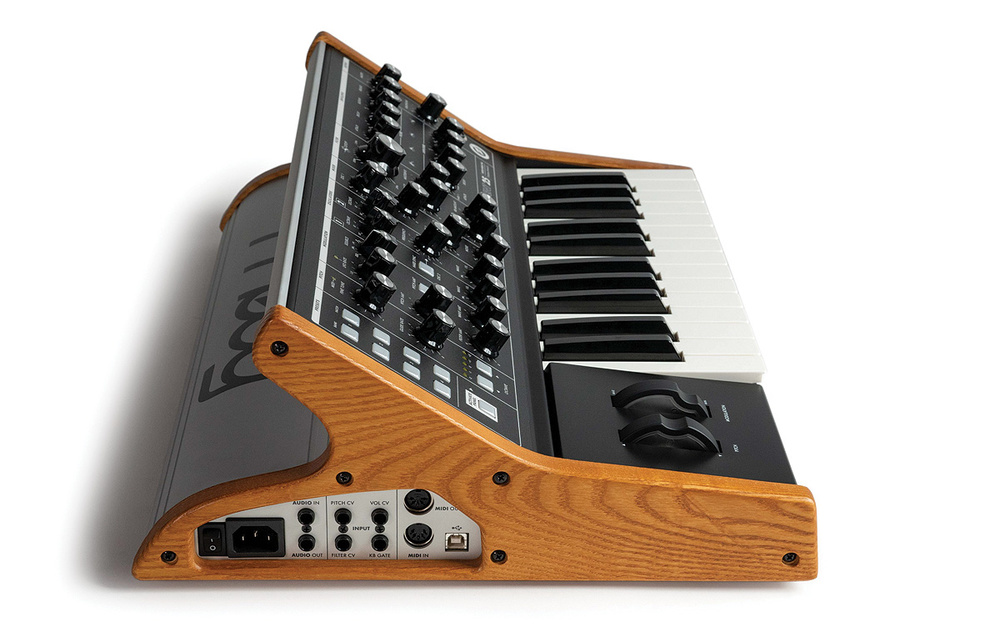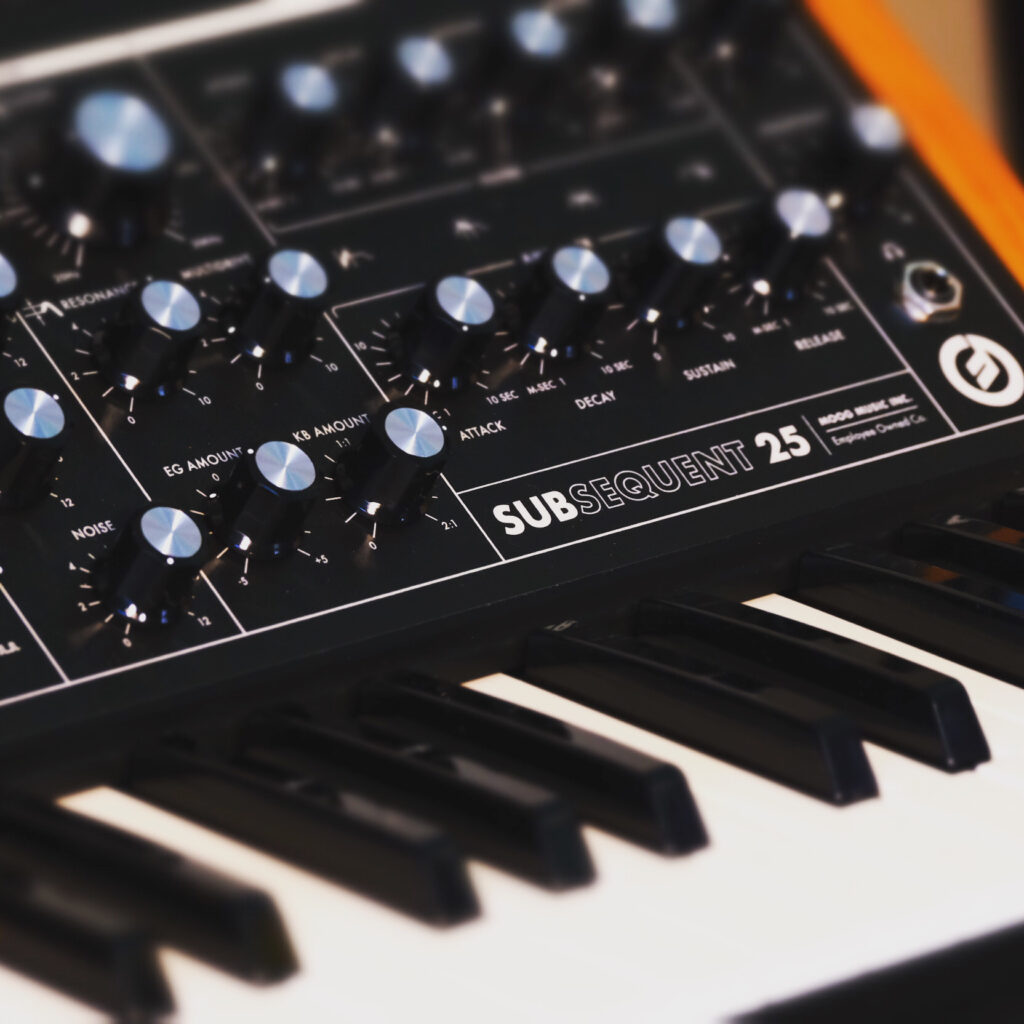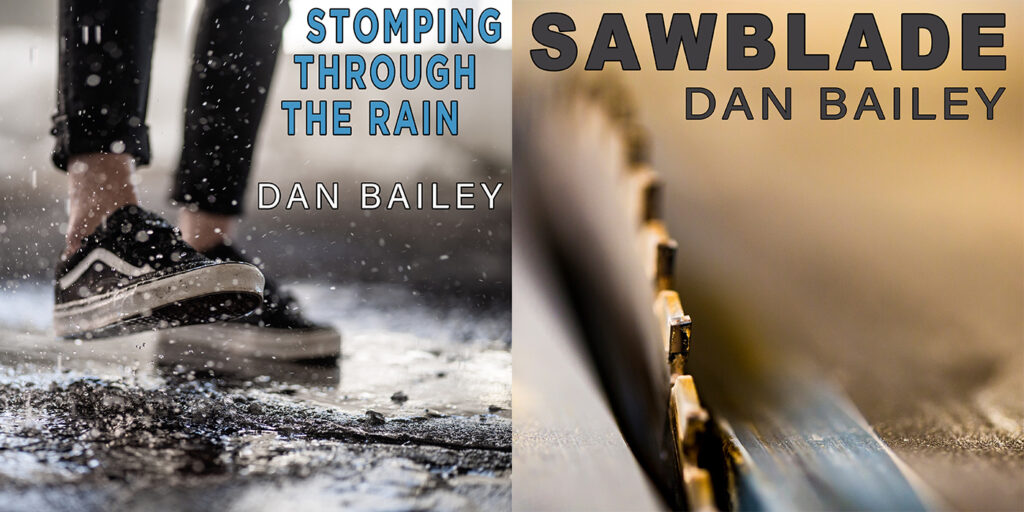In a recent post, I mentioned that I had opened the lid to the rabbit hole of synthesizers with the purchase of my first hardware synth, the Uno Synth Pro by IK Multimedia. The Uno Synth Pro is indeed...

In a recent post, I mentioned that I had opened the lid to the rabbit hole of synthesizers with the purchase of my first hardware synth, the Uno Synth Pro by IK Multimedia.
The Uno Synth Pro is indeed an awesome instrument; it sounds incredible, and the desktop version is very small and compact. Also, the price was well within the that “justifiable” range for a first synth.
I’ve had a lot of fun with the Uno, and have been really impressed by its amazing sound engine and features, including its 16-slot Modulation Matrix that allows for a HUGE amount of musical and sound customization.
However, for as much as I like the Uno, there’s something that it’s missing, which I was apparently craving: The old school vibe, design and construction of a classic synth.
In other words, its not a Moog.
I absolutely love the retro look and feel of Moog synths, probably for the same reason I love my Fujifilm cameras, and having grown up in the 70s and 80s, the Moog sound is hard wired into my progressive rock and roll brain. Classic Moog sweeps, leads and fat bass sounds have appeared on countless hit records in the history of popular music.
And, they just look so damn cool… all spacey and futuristic.

Having now opened the Pandora’s box of synthesizers with the Uno, I found myself in the very dangerous predicament of suddenly wanting a Moog. This danger was compounded by the fact that a Guitar Center lies only 7 minutes from my house.
And so, in a moment of absolute weakness, personal indulgence and pure want, I drove up there one day last month and bought a used Subsequent 25.
With the look and feel of a classic Moog, sporting a cool sloped design, steel chassis, gorgeous maple side pieces, and a front panel that contains 31 satisfying knobs and 13 buttons, the Subsequent 25 is a stunningly beautiful instrument.
And with its killer sound engine, it makes just the kinds of sounds you’d want it to, and more.

Inside, it has two powerful oscillators, a single LFO, great sounding filters, 16 on-board preset slots, a very responsive keyboard, and a number of hidden parameters that actually expand its sonic capabilities in a huge way.
In addition, it has full MIDI in and out with either 5-pin or USB, a companion desktop app that acts as a controller and library manager for storing and recalling presets, and it can function as a full MIDI-controller on its own. The means you have 44 buttons and knobs, (plus the pitch and mod wheels), that you an assign to software instruments, effect plugins, or to your DAW controls.
I won’t go into “full review mode” in this post; (Here’s a great review of the Subsequent 25 by Sound on Sound), instead I’ll just make things simple and say that I absolutely love my new Moog Subsequent 25. It definitely scratches that itch I didn’t know I had until I started down that synthy rabbit hole.
Now I’m hooked. I can make those classic Moog sweeps, leads, basses and space sounds on my own, with plenty of knobs to twiddle in the process. You can hear some of my own Moog sounds below, and you can hear them in the spacey intro of my brand new song, Interstellar Love Song.
If you’re curious about the Subsequent 25, check out the Moog Website.
Interstellar Love Song by Dan Bailey














